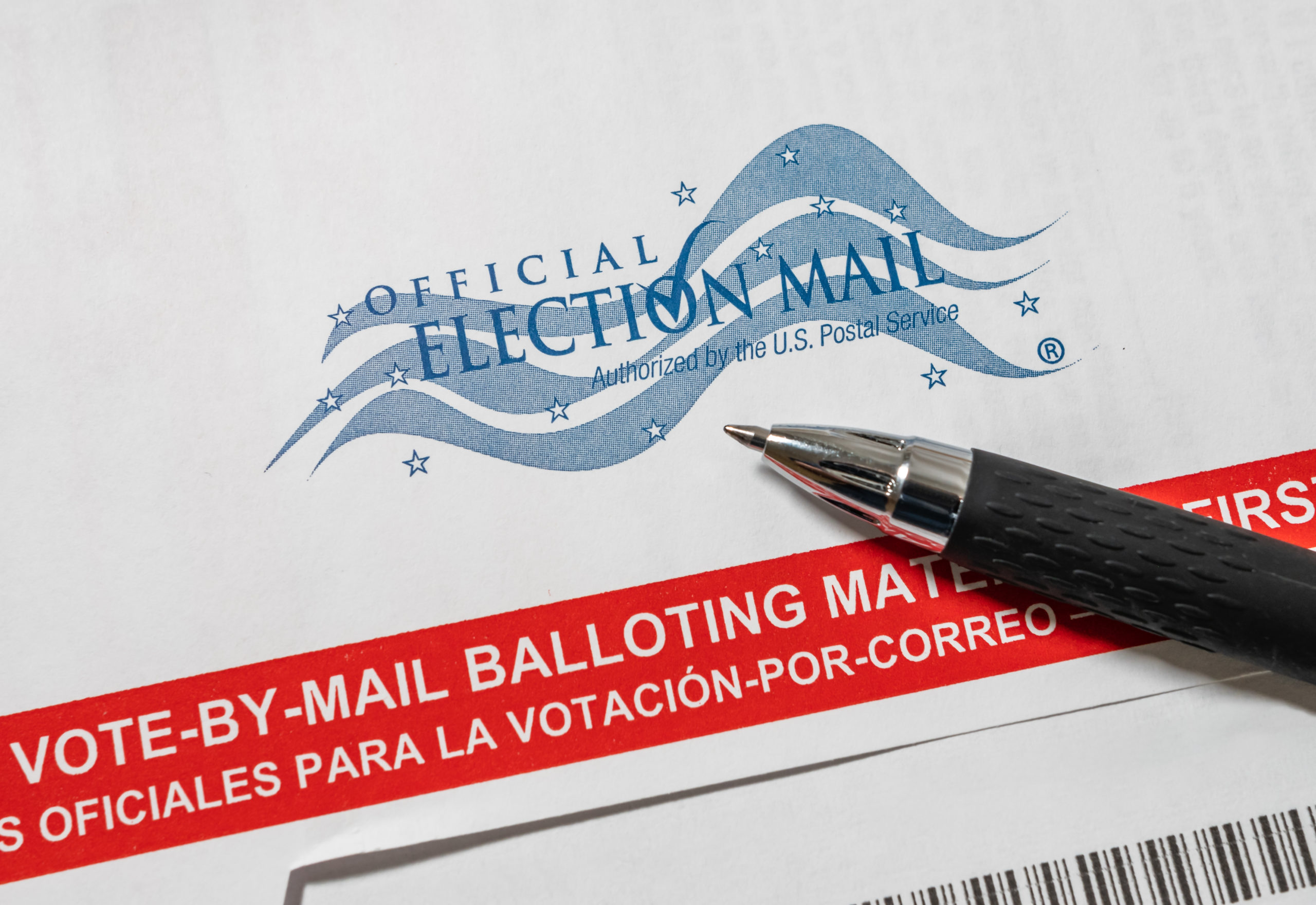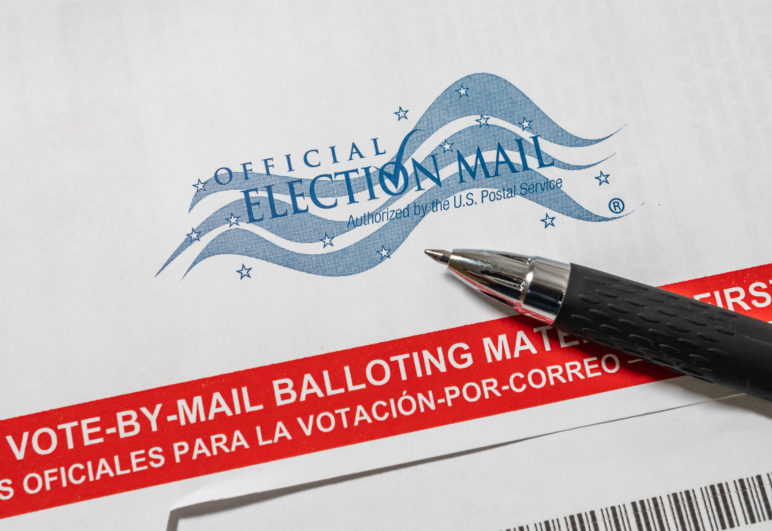Elections officials are fretting over what The New York Times called the “Doomsday scenario” for the US presidential election—an early landslide in favor of President Donald Trump among ballots counted on election night, a premature declaration of victory, and confusion when states have had enough time to count and verify an expected absentee spike and, days later, call a legitimate win for Joe Biden.
The reality is, we likely won’t be able to call a winner on election night. The votes will get verified and counted, but it could take a few days. That’s okay. It means election officials are doing their jobs. As Republican Secretary of State Frank LaRose put it, numbers changing post-election night is not a sign of something nefarious happening. “It’s a sign that the system is working the way it’s supposed to,” LaRose said at a September press conference. “When we say that every voice matters and so every vote should count, that’s exactly what we mean.”
The good news is that states critical to Electoral College victory are reasonably well prepared to deliver results quickly, despite significant changes to their voting processes during the pandemic.

All eyes will be focused in particular on the critical battleground states that are likely to determine the outcome of the presidential election and the balance in the Senate. So, we assessed 17 key states. The good news is that these states are reasonably well prepared to deliver results quickly, despite a significant jump in mailed ballots as a result of the pandemic. All potential battleground states either start processing absentee ballots before Election Day or have sufficient scanning equipment to quickly count ballots once they are processed. We expect most will be able to announce within a few days, and almost all within a week of November 3.
Our analysis: Are swing states set-up for election success?
Using FiveThirtyEight’s election forecast, we identified 17 swing states (including Maine and Nebraska because they apportion their Electoral College votes by congressional district and have one battleground congressional district, and Montana because it has a highly contested Senate race). For each state, we examined three important factors in quickly and accurately counting mailed ballots:
1. When they start processing absentee ballots;
2. Whether they have sufficient equipment—high-speed ballot scanners—to handle the influx; and
3. When ballots postmarked on Election Day must be received.
Based on these factors, we made a rough prediction about how quickly each swing state could declare a winner. Our analysis is focused on absentee ballots and does not account for provisional ballots (ballots cast when a voter’s eligibility is in question), which are counted after all other ballots and have later deadlines to allow elections officials to verify voter eligibility. If provisional ballots are the deciding factor, election results will take longer to report.
Our prediction for when a state will announce election results: Fast = within 3 days; Medium = within a week; Slow = 1 week or more.
Colorado, a state that mails ballots to all voters so they can conveniently Vote At Home runs its elections entirely by mail, had one high-speed scanner for every 23,000 voters in 2018. This voter-to-scanner ratio is a good benchmark because the results of many Colorado races were announced on election night in 2018. We classified any state with this ratio of scanners to voters as “high.” A “medium” number of centralized scanners means one scanner for every 23,000 to 50,000 people. A “low” number is one that offers fewer than one scanner per 50,000 people.
| STATE | DATE TO START PROCESSING ABSENTEE BALLOTS | CENTRALIZED SCANNING EQUIPMENT (AS OF 2018) | BALLOT RECEIVED DEADLINE | OUR ELECTION SPEED PREDICTION |
|---|---|---|---|---|
| Arizona | 14 days before Election Day | Medium | Election Day | Fast |
| Florida | 22 days before Election Day | Low | Election Day | Medium |
| Georgia | Upon receipt | High | Three days after Election Day (for 2020 only, lawsuit pending) | Slow |
| Maine | Election Day | No central scanners, lots of regular scanners | Election Day | Slow |
| Michigan | Election Day | No central scanners, lots of regular scanners | Election Day | Medium |
| Minnesota | Upon receipt | Low | Election Day, 3:00 pm if by hand | Fast |
| Montana | Upon receipt | Medium | Election Day | Fast |
| Nebraska | Second Monday before Election Day | High | Election Day | Fast |
| Nevada | Upon receipt | Medium | Election Day +7 (if postmarked by Election Day) | Slow |
| New Hampshire | Election Day | No central, small jurisdictions | Election Day | Medium |
| New Mexico | Four days or two weeks before Election Day, depending on number of absentee ballots | Low | Election Day | Medium |
| North Carolina | Five weeks before Election Day (depends on county) | Way low | Election Day +9 (pending a judge ruling) | Slow |
| Ohio | Upon receipt | Medium | Election Day (must be postmarked day before Election Day) | Fast |
| Pennsylvania | Election Day (pending legislation would allow processing to begin 3 days before) | Low, added scanners in past year | Election Day +3 (if postmarked by Election Day) | Slow (about half of counties were still counting a week after the June primaries) |
| Texas | 12 days before Election Day (counties of 100,000 residents or more) | Low | Election Day +5 (if postmarked by Election Day) | Medium |
| Virginia | Before Election Day as needed | Low, lots of regular scanners | Election Day +3, by noon (if postmarked by Election Day) | Medium |
| Wisconsin | Election Day | Low, small jurisdictions | Election Day +6 | Slow |
Our analysis does not account for provisional ballots (ballots cast when a voter’s eligibility is in question), which are counted after all other ballots and have later deadlines to allow elections officials to verify voter eligibility. If provisional ballots are the deciding factor, election results will take longer to report.
Top factors in election efficiency
EARLY BALLOT PROCESSING
First, Sightline recommends that states begin processing ballots at least seven days before Election Day. Processing is different from counting—it means verifying signatures then opening the envelopes so the ballots are ready to be counted come Election Day. Fortunately, 12 of the 17 battleground states are following this best practice of processing early. Only five of the states—Maine (Grade: D-), Michigan (Grade: B), New Hampshire (Grade: F), Pennsylvania (Grade: C-), and Wisconsin (Grade: C)—do not begin processing absentee ballots until Election Day. These five states may need more time to finalize winners as election officials work quickly to make up for inefficient rules that forced local officials to squander pre-election time.
HIGH SPEED SCANNERS—and compounding factors
Second, we recommend that states invest in sufficient high-speed scanners so they can count ballots faster. The “Centralized Scanning equipment” column in the table above shows whether states had a low, medium, or high number of high-speed scanners per voter as of 2018. High-speed equipment is not as critical in states like Maine, Michigan, Wisconsin, and New Hampshire that count votes in small precincts, so they don’t need to feed a large volume of ballots through a single scanner. States that have sufficient numbers of scanners but not high-speed scanners—North Carolina (Grade: F), Texas (Grade: F), Minnesota (Grade: C-), Florida (Grade: B-) and New Mexico (Grade: B)—may be able to count well enough, but would be able to count votes more quickly if they upgraded their equipment.
Put these first two factors together, and we see that many swing states are well-positioned to quickly process ballots even if they see, as expected, a spike in absentee ballots. Georgia (Grade: B) and Nebraska (Grade: B-) both start processing ballots at least a week before Election Day and have plenty of high-speed scanners. Georgia took nearly 10 days to count 99 percent of votes in its primary, in part due to problems with in-person polling machines. But Nebraska had counted almost all votes within three days of the primary. Barring other problems, these states might be able to declare a winner within a few days of Election Night. Georgia has 16 Electoral Votes; Nebraska has 5.
Arizona, Montana, Nevada, and Ohio also all start processing before Election Day and have a good number of high-speed scanners. We expect they also might be able to declare results within a day or two of election night. Montana and Ohio had counted almost all primary votes within a day of polls closing, while Arizona took nearly 6 days.
Florida, Minnesota, New Mexico, and Virginia (Grade: D) start processing ballots before Election Day but do not have many central scanners. It may take longer for these states to deliver results if the race is close. North Carolina determines when processing may begin on a county-by-county basis, and counties may start processing as early as five weeks before Election Day. At least 30 counties have already said they will start processing by September 29.
In the five states that don’t start processing until election night, all have either no central scanners or limited central scanning equipment. But county-level data reveals that may not be a problem. Maine, New Hampshire, and Wisconsin conduct their elections in very small jurisdictions, some containing only a few hundred registered voters each, and likely don’t need high-speed scanning equipment. Similarly, Pennsylvania and Michigan have hundreds of slower scanners distributed statewide. Pennsylvania (Grade: C-) significantly increased the number of scanners since 2018; its 2019 election reforms included millions of dollars for counties to upgrade their infrastructure.
DEADLINES FOR RECEIVING BALLOTS
Complicating this analysis is a third factor: the deadline for the elections office to receive ballots. We recommend that states allow ballots postmarked on Election Day to be accepted even if they arrive at the clerk’s office several days later. While this policy delays results, it ensures that votes cast by election day count, even if they still must make their way through the postal system. Voters who cast their vote by election day shouldn’t be disenfranchised.
Most of the battleground states below require ballots to arrive by election day, no matter how fast or slow the mail is running. Voters in those states need to be vigilant about getting their ballot in the mail early, or delivering it to a drop box or vote center. But the election day deadline will speed up results as those states will have all the ballots they are going to count by the time polls close.
Only five of the swing states—Nevada, North Carolina, Pennsylvania (thanks to a recent court decision), Texas, Virginia, and Wisconsin—accept postmarked ballots that arrive after Election Day. Election results could take longer in these states as legitimate ballots trickle in after Election Day.
Bracing for a new election experience in 2020
Here in Oregon and Washington, voters are accustomed to receiving our ballots in the mail, filling them out in the safety and convenience of our homes, and turning them in via mail, a drop box, or in person. We know that officials might need a few days to check all barcodes, verify the signatures, and count the ballots, so we don’t expect immediate gratification on election night. The delay in calling election results is evidence of local clerks and election officials doing their jobs: a thorough and secure process, careful tracking, verification, and successful fraud-protections, not the other way around.
As voters in other states adjust to this process—and its pace, there may well be confusion on November 3. We won’t have definitive answers in one day. It’s time to get comfortable with that. The good news is that most swing states can safely process absentee ballots quickly and declare a winner within a few days. The extra wait is a small price to pay as the country gets closer to truly counting every vote.
Sightline is a 501(c)3 non-profit organization and does not support, endorse, or oppose any candidate or political party.
Hayat Norimine, research contributor, is a freelance writer who grew up in Washington on the border of Idaho. She previously covered city halls and politics for The Dallas Morning News, Seattle Met magazine, and The Daily News in Longview, Washington. She has an MA in journalism from the Medill School of Journalism and a BA in English from the University of Washington. For Sightline, she researches and writes about democracy reform and elections issues and reports on fossil fuel proposals along the Thin Green Line.
Zane Gustafson is a freelance researcher who holds a master of public affairs degree, with a focus in climate policy, from the Evans School of Public Policy and Governance at the University of Washington. He also studies foreign affairs, political rhetoric, and American history.
Kristin Eberhard, Director, Climate and Democracy, is a researcher, writer, speaker, lawyer, and policy analyst who spearheads Sightline Institute’s work on democracy reform and on climate action. She researches, writes about, and speaks about elections systems and democracy reform, with particular expertise on Vote By Mail and proportional representation. Eberhard lives in Oregon, an all-Vote By Mail state. She is available to discuss tested, safe, fair COVID-19 election practices, state by state. Find all Eberhard’s latest research here.
For interviews, speaking engagements, and media inquiries, contact Anna Fahey.













